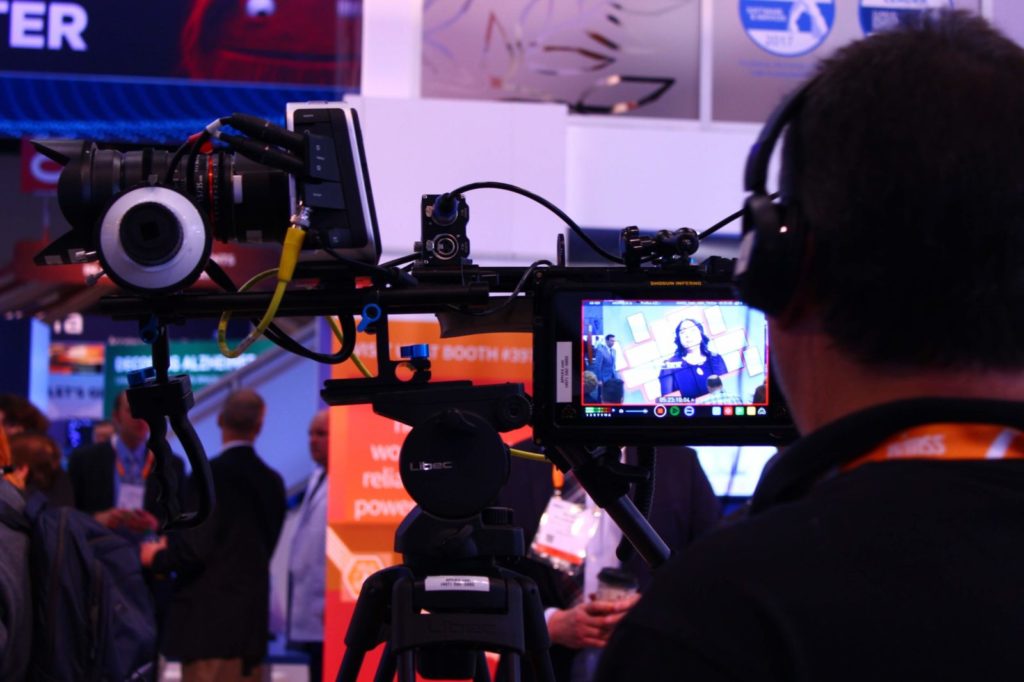Introduction
In today’s fast-paced business landscape, trade shows are akin to the grand stages where companies aim to steal the spotlight, captivate audiences, and make a memorable mark. However, the dynamics of trade show success have evolved, urging businesses to harness the power of media content in innovative ways. Enter the art of repurposing—where creativity meets efficiency to not only seize the moment but also extend its impact. In this blog post, we’ll embark on a journey exploring the transformative potential of repurposing media content for trade shows, uncovering how this strategy can elevate your presence and leave a lasting impression in the bustling trade show arena.
Similarly, we’ll explore how to repurpose your trade show content for other marketing purposes, maximizing your investment and extending the reach of your efforts.
Why Repurpose Trade Show Content?
Trade show content represents a significant investment, both in terms of time and resources. Repurposing this content can yield numerous benefits:
- Cost Efficiency: It’s more cost-effective to repurpose existing content than to create entirely new materials.
- Consistency: Maintaining consistent messaging across platforms helps reinforce your brand identity.
- Extended Reach: By repurposing content for various marketing channels, you can reach a broader audience.
- Relevance: Repurposed content allows you to keep your trade show experiences fresh and relevant long after the event has ended.
- Storytelling: Repurposing content lets you tell a cohesive and compelling brand story.
Types of Trade Show Content to Repurpose for other Marketing Efforts
Your trade show content is a treasure trove of materials that can be repurposed for different marketing purposes:
- Presentation Slides: Turn your trade show presentations into webinars or video tutorials for online audiences.
- Photos and Videos: Utilize high-quality event photos and videos for social media posts, blog content, or advertisements.
- Product Demonstrations: Edit product demo videos into shorter clips for social media teasers or explainer videos.
- Customer Testimonials: Transform written or video testimonials into case studies or customer success stories for your website or email campaigns.
- Infographics and Visuals: Use graphics and infographics from your booth materials for blog posts, email newsletters, or printed collateral.
- Interactives and Games: Utilize booth interactives and games in your website and social media efforts. Or provide to your sales team to use as additional sales tools.
Of course, the reverse works as well. There are many ways that existing media content can be repurposed in your trade show booth. Let us count the ways.
Types of Existing Media Content to Repurpose for Your Trade Show
- Videos: Clips from product demonstrations, customer testimonials, or behind-the-scenes footage can be edited into shorter, attention-grabbing, sizzle videos or made into compelling video presentations.
- Blog Posts: Extract key points from blog posts and turn them into visually appealing infographics or presentations. Or create a white paper from that content and offer to email it to attendees.
- Images: High-quality images from your website, social media, or past marketing campaigns can be repurposed for booth graphics, posters, or flyers. Images can also be used to create compelling videos, PowerPoint Presentations, and product demonstrations. You can even turn images into puzzle games or other interactives to engage attendees.
- Podcasts: Convert podcast episodes into written transcripts, “TED”-style talks, or create visually engaging graphics featuring memorable quotes.
- Social Media Posts: Popular social media posts can be turned into engaging slideshows incorporated into your booth’s digital displays.
Practical Tips for Repurposing Content
- Review and Organize: Collect all content that you might use for the trade show and identify your top-performing content. Analyze metrics such as engagement, shares, and conversions to determine which pieces resonate most with your audience. Consider how you might be able to use those assets in the trade show. After the event, gather the content generated during the trade show, including presentations, images, and videos. Organize them for easy access and reference.
- Adapt to Different Formats: Tailor your content to fit the requirements of various marketing channels. What worked for a trade show will likely need adjustment for a blog post, social media post, or email campaign.
- Maximize for Accessibility: Adjust your content to fit the needs of various audiences. Change font sizes depending on the size of the image and its location. Consider the distance at which your audience will be viewing the content and adjust the content to fit their needs. For interactives, make the user interface easy to navigate for multiple screen types.
- Tailor Content to the Audience: Adapt your content to suit the trade show audience. Highlight how your products or services can address specific pain points or challenges within the industry.
- Invest in Design: Visual appeal matters. Enlist the help of a graphic designer or use user-friendly design tools to create eye-catching visuals and materials. When repurposing content, consider how you can add value to your audience and to your brand. Share insights, tips, or additional information with your designer to make the content more informative and engaging.
- Create a Content Calendar: Plan your content repurposing strategy well in advance. A content calendar helps you stay organized and ensures a consistent flow of media throughout the event. Timely releases can coincide with industry events, product launches, or relevant news. Don’t just rely on your booth visitors to discover your content. Promote it on social media, email newsletters, and your website to generate interest and excitement leading up to the trade show.
- Track Performance: Implement tracking mechanisms to measure the effectiveness of your repurposed content. Analyze metrics such as engagement, click-through rates, and conversions to fine-tune your strategy.
Successful Examples of Content Repurposing
- HubSpot’s Inbound Marketing Conference: HubSpot repurposes keynote speeches and panel discussions from their annual conference into blog posts, podcasts, and YouTube videos, extending the event’s impact throughout the year.
- Adobe’s Sneaks at Adobe MAX: Adobe repurposes the popular Sneaks segment from their Adobe MAX conference, where they showcase innovative technology, into YouTube videos, generating buzz and anticipation for their products.
- IBM’s “World of Watson”: IBM repurposed blog posts, videos, and webinars into engaging presentations and live demos, showcasing the versatility of their Watson platform.
- Tesla’s Product Launches: Tesla often repurposes teaser videos, blog posts, and social media content to build anticipation and excitement around their product launches at trade shows.
Conclusion
Repurposing media content for trade shows is a smart strategy that can help your business make a significant impact without breaking the bank. By leveraging your existing assets and tailoring them to your trade show audience, you can create a cohesive and memorable experience that sets you apart from the competition. Conversely, by repurposing content made specifically for the trade show for ongoing marketing efforts, you can maximize your investment, maintain consistent messaging, and reach a broader audience. So, don’t let any of your content gather dust—instead, transform it into a versatile asset that keeps working for your brand throughout the year.
Looking for a strategic partner with bold ideas and the chops to deliver? For over 30 years, we’ve been making big ideas happen daily – with measurable results. Let’s chat about maximizing your event success!



